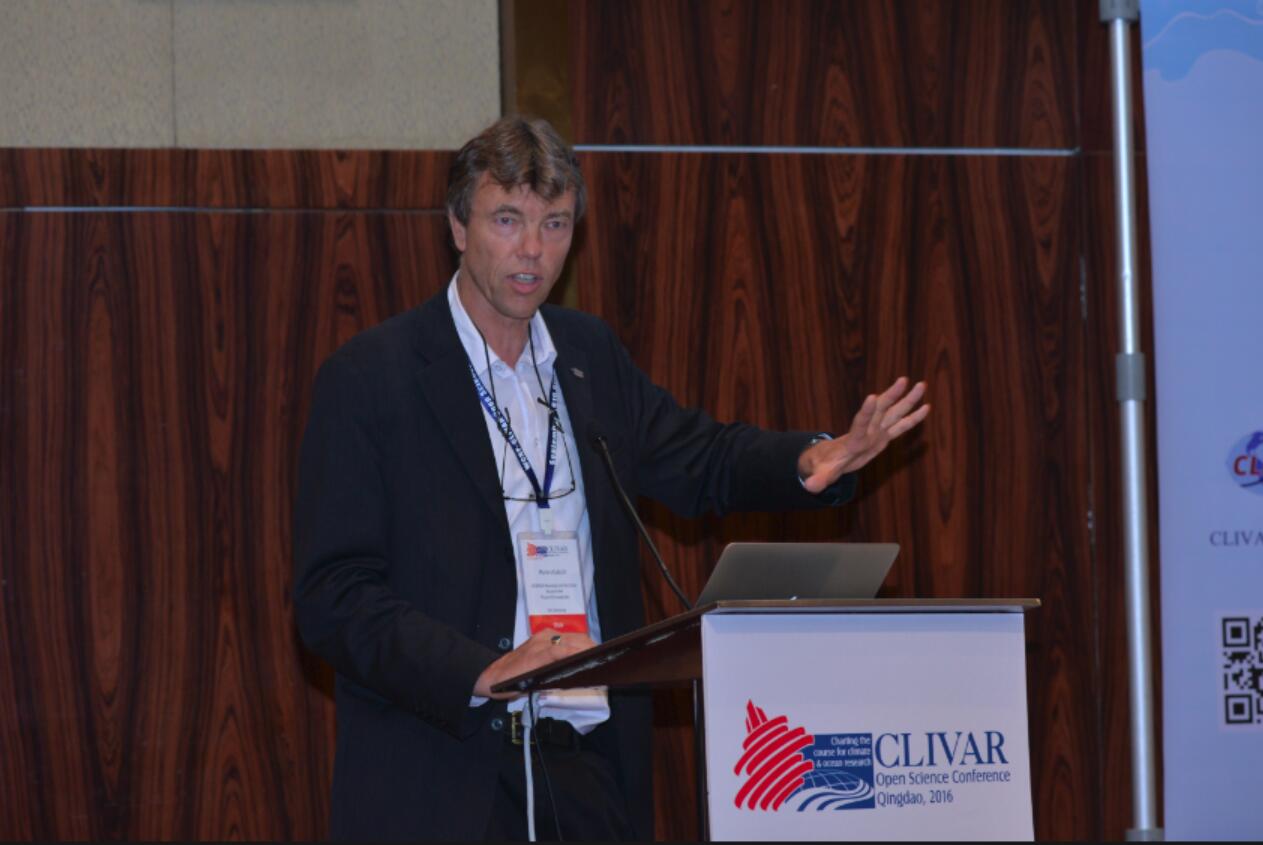CLIVAR OSC: Day 5 Highlights - The Future of Climate and Ocean Science

Closing out a week of great talks, discussions, and new or strengthened collaborations, the final day of the conference focused on climate information for sustainable development and the future of climate and ocean science. Two morning plenary and panel discussions were followed by closing remarks and the presentation of the early career scientist poster awards.
Martin Visbeck set the tone for the day by framing the question, why do we organize climate science internationally. “Some problems we are facing are so large, one country can’t do it alone,” he said. Arame Tall Diop from the Global Framework for Climate Services in Africa talked about climate research to climate services and the emerging needs for Africa. She said there was a major gap that needed to be addressed between climate science and users of the information. One research gap is the predictability of the Atlantic Nino. She identified the need for a similar global push to establish observing systems over the equatorial Atlantic like was done with the Pacific.
Fei Chai, University of Maine, discussed the role of ecosystems in a changing world by showing how Peruvian anchovy fishery prefers a colder climate, and when during the past El Niño event, the fisher catch was reduced by 50%. He also showed data on the Maine lobster industry that boomed, due to loss of predators (e.g., overfishing of cod) and warming temperatures that cause the lobsters to shed their shells two months earlier, as seen in 2012. Most fishery stock assessments do not incorporate environmental information, only about 1% currently do. Another impact for a climate change is ocean acidification, which will impact many trophic levels.
To understand the future climate, we need to advance our basic understanding of atmosphere-ocean climate dynamics using observations and models and to determine the role of climate dynamics in shaping climate variability and change on seasonal to centennial timescales, said Mat Collins, University of Exeter. A few of the pressing questions that need to be addressed, include the organization of storms, blocks, and jet streams; basin-to-basin and tropical-extratropical teleconnections; and the development of predictive theories of climate dynamics.
Nicolas Gruber, ETH Zürich, talked about the state of and future outlooks for carbon and biogeochemistry. Some emerging directions in the role of carbon uptake biogeochemistry impacts are decadal variations, extreme events (like marine heatwaves), and the deployment of Biogeochemical-Argo. To address these challenges, an interdisciplinary approach is a must. And in a complex system, observations are the pillar of scientific discovery, because predications are only as good as our understanding.
The final day included panel discussions and reflections. One thing that emerged was the notion that the current model—scientists know the truth, and that's the end all—is not a good form of communication. “We need a new approach,” said Guy Brasseur, chair of the WCRP. One clear way to do this is improve the communication between boundary organizations and the climate science community to get the information to users, recognizing there are many choices and decision points along this process. There was also the recognition that early career scientists can be a voice and should be encouraged to build their communication skills along with their scientific ones.
The future of CLIVAR to help build a society resilient to environmental changes needs to expand the understanding of uncertainty in climate risk and provide regional climate information and seamless predications across timescales. Understanding mechanisms and consequence of climate variability and change is important both globally and regionally. Research directions need to establish multi-scale approaches in space and time for both the fundamentals of science as well as mitigation and adaptation. International cooperation is critical to grow the infrastructure that underpins all CLIVAR science. Ultimately, the community should strive to help manage and reduce climate risk in the future.
CLIVAR Open Science Conference “By The Numbers”
608 Participants
234 Poster presentations by early career scientists
108 Plenary and parallel session talks
50 Countries represented
42 Percent of early career scientists and students attending
21 Developing countries represented
20 Years since CLIVAR was established
11 Town halls
5 Days of meetings
3 Days for the Early Career Scientists Symposium
1 International CLIVAR
More details about the Open Science Conference can be found at www.clivar2016.org.














Add new comment